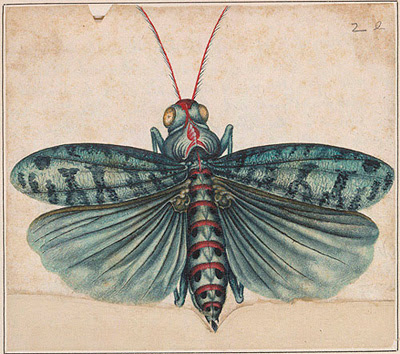
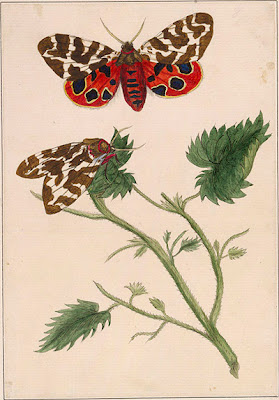
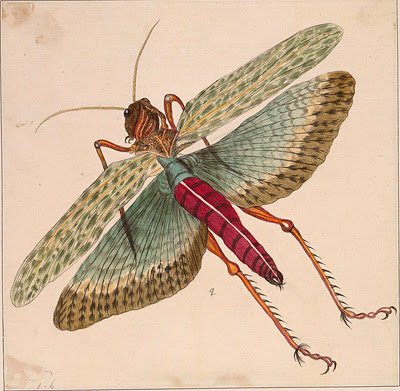
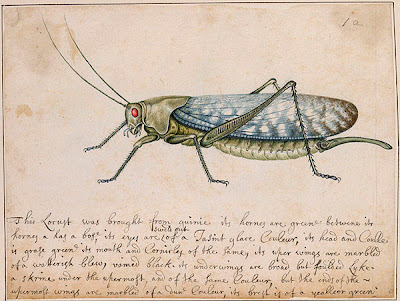
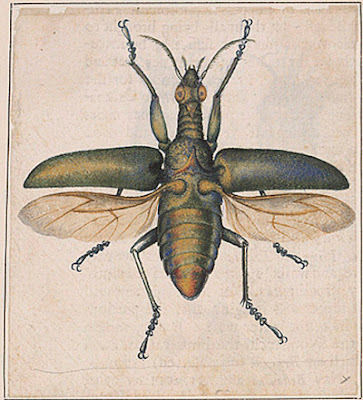
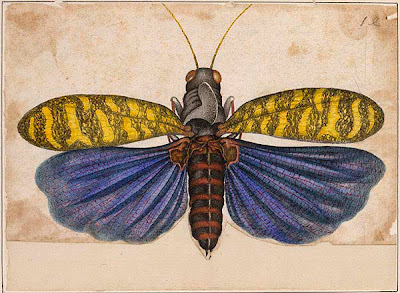
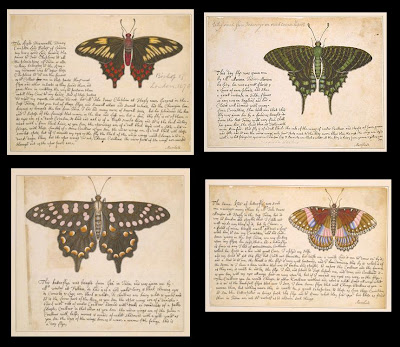
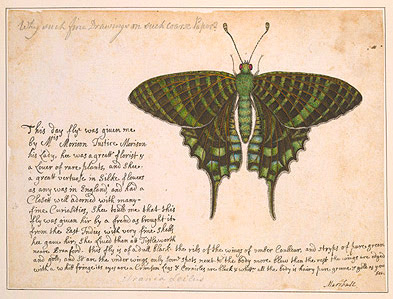
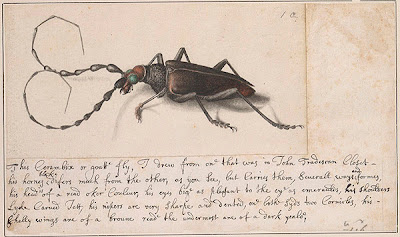


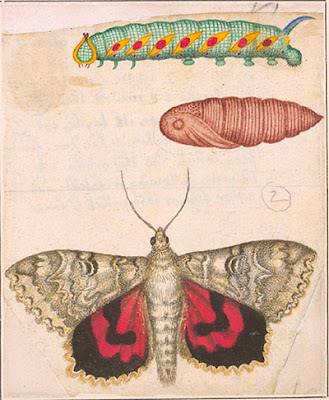
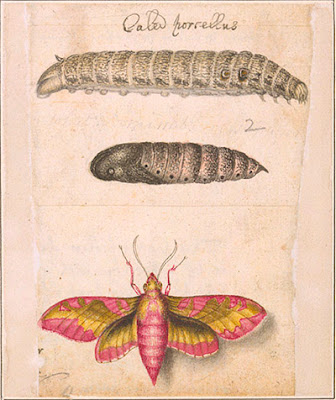
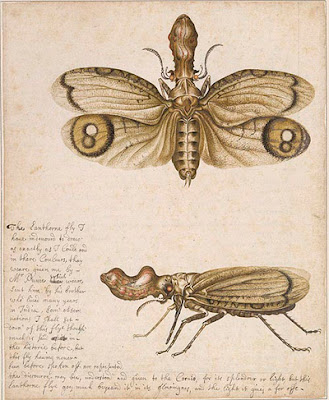
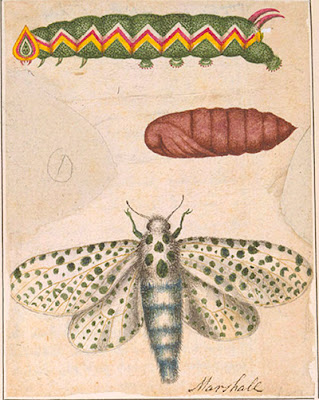
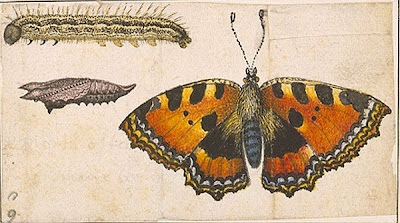
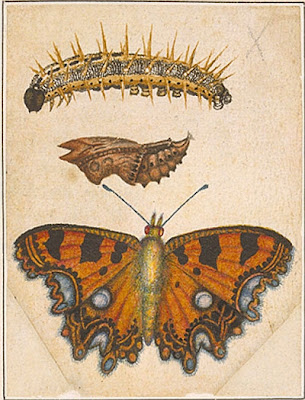

The website displaying these images is firefox incompatible so I'll reproduce some of the accompanying commentary...
"Alexander Marshal, 162?-1682, was chiefly known as an illustrator of flowers and plants. In 1980, his expertise in painting insects also came to light, through this album of insect drawings. The album consists of 57 pages containing 129 watercolors of insects: butterflies, moths, caterpillars, beetles, locusts, spiders, flies, and crickets. The backs of Marshal's drawings contain notes in his own hand, and these annotations provide autobiographical information as well as material for study of word usage and dialects."The Alexander Marshal Insect Watercolors Album (probably 1660-1680) is online at the Ewell Sale Stewart Library at the Academy of Natural Sciences. (firefox incompatible)
"Alexander Marshal's date of birth remains unknown (162-?), but it is known that he died on 7th December 1682, leaving a widow, Dorothea (daughter of Francis Smith), but no children. Marshal first appears as a mature artist in the late 1640s, so was probably born before 1625. He was previously a merchant, and had resided for some time in France. It appears that Marshal had no house of his own. He is mentioned as living at Ham in 1650, London in 1651, and Islington in 1654 where he resided with the son of an Alderman Dewes, and he spent the last years of his life in Fulham Palace, home of his friend Henry Compton, who was Bishop of London from 1675."
"Marshal's great nephew and eventual heir, William Freind, described him as a gentleman with "an independent fortune [who] painted merely for his Amusement". Nonetheless, already in 1958, Marshal was described in Sir William Sanderson's Graphice as a flower and fruit artist among "our Modern Masters comparable with any now beyond seas". He became renowned as one of the earliest water-colorists, and his ingenious experiments derived pigments from flowers, berries, gums, and roots, as well as verdigris and arsenic, that give his paintings a unique vibrancy of color."
"A keen lepidopterist, Marshal's annotations describe his subjects in great detail. He also tells of enlisting the help of two of his friends: John Tradescant (1608-1662), and Bishop Henry Compton (1632-1713), in order to acquire many rare insects from foreign lands. [...] Marshal was a man of dialectal (and inconsistent) spelling who nonetheless used some technical terms from Latin, knew some Greek and incorporated in his informal communication terms not generally known no to have been in use in his era."
No comments:
Post a Comment